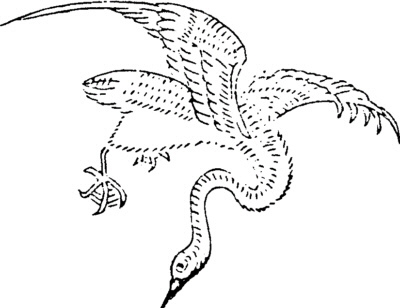Chapter 7 Section 4 Lu Ji's "Mao Poems Vegetation, Trees, Birds, Beasts, Insects and Fishes"
As mentioned above, it contains a wealth of animal and plant knowledge, and a large number of animal and plant names have appeared.Mao Heng, who was the first to pay attention to the animals and plants mentioned in the research, was an annotator at the end of the Warring States Period.He is the author of "Mao Shi Gu Xun Biography" (referred to as "Mao Biography"), which has 30 volumes, and almost all the animals and plants mentioned in the poem are annotated.
The most accomplished and influential in the study of animals and plants mentioned in the book is the Wu Ren Lu Ji of the Three Kingdoms.His "Mao Poems, Plants, Trees, Birds, Animals, Insects, and Fishes" is a work that specifically annotates the animals and plants mentioned in it, so some people call it the first monograph on animals and plants in China.The book records 80 species of herbaceous plants, 34 species of woody plants, 23 species of birds, 9 species of mammals, 10 species of fish, and 18 species of insects, totaling 174 species of animals and plants.For each animal or plant, not only record its name (including synonyms in various places), but also describe its shape, ecology and use value.For example, Lu Ji described Xingxing (Xingxing) vegetable like this: "Xingxing, a name for Jieyu. White stems, purple-red leaves, perfect circle, and a diameter of more than one inch; floating on the water, roots at the bottom of the water, stems and water depths etc. It is as big as a hairpin, green on the top and white on the bottom, and its white stem is soaked in bitter wine. It is crispy [cui] and beautiful, and it can be used as wine. It is yellow in color." Compared with the previous description, it is much more detailed.He wrote about hemp: "It is also hemp. There are dozens of stems in the family, and the perennial roots are in the ground. They will grow on their own in spring, and they will not be planted every year. Jing and Yang will be harvested three times at a time. It is planted in the official garden today, and it will grow again every year. Cut. Cut it, then peel it raw, scrape its surface with iron like bamboo, and its thick skin will fall off by itself. But if the inside is as tough as tendons, boil it, use it, and call it Huifu. Today, Nanyue rice paddies are all made of this. Hemp.” Here, the planting, harvesting and rough processing of hemp are described in considerable detail.Many accounts in the book are related to Lu Ji's personal experience.For example, regarding Shuo rat, he wrote: "There are rats in Hedong (today's southwest of Shanxi). They can stand upright (that is, stand upright), put their front feet on their necks, dance and sing well, eat human seedlings, and walk into them when they chase them. Trees in the air. There are also five skills, or they are called sparrows and mice. Its shape is large, so the "Preface" says, "rats are also". Wei Guo is also in Hebei County in Hedong. The poem says that it is a mouse, not a squirrel. 〔shi stone〕rat also." Regarding Lin, Lu said: "There are Lin in the boundary of Bingzhou today, the size is like a deer, and it is not auspicious Lin." Regarding the Shaji, Lu Ji pointed out, "Shaji is like a locust, with spots and colors. The number of wings is heavy, and its wings are red, or it is called a pheasant. It flies in mid-June and vibrates its feathers and makes a sound. People in Youzhou call it Pucuo." These descriptions, if not personal experience and careful observation, are written not come out.
The distribution of animals and plants recorded by Lu Ji covers all over the country, and even involves the current North Korea and Vietnam, which shows his broad vision. "Lu Shu" has greatly inspired future generations to study animals and plants, and also had a profound impact on the later development of herbal medicine.On the basis of Lu Ji's work, Mao Jin in the Ming Dynasty compiled "Mao Poems on Vegetation, Trees, Birds, Animals, Insects, and Fish".In the Qing Dynasty, Xu Ding also wrote "Illustrations of Famous Objects in Mao Poems" (Fig. 7, Fig. 8).The animals and plants studied by Japanese scholars later, such as Ina Wakasui's "Mao Shi Xiaoshi" and Okamoto Feng's "Mao Shipin Wu Tu Kao" were all influenced by Lu Ji.

Figure 7. The picture of geese in Xu Ding's "Illustrations of Famous Things in Mao Poems" in the Qing Dynasty

Figure 7. The picture of geese in Xu Ding's "Illustrations of Famous Things in Mao Poems" in the Qing Dynasty
